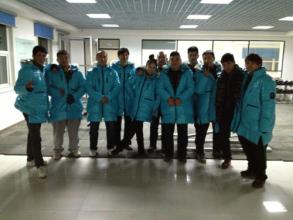摘要:霍迪详细地介绍了他与中山大学岭南学院合作的MBA学生的企业社会责任课程的全过程以及该课程的影响。 Nike. Several of the company’s local compliance staff attended lessons and brought valuable hands on experience to the class.
From the beginning, the Lingnan CSR course was designed for Chinese managers in China. Although Professor Xu and I believed that it was important for students to understand the global context, we agreed that it was just as important that they were given the opportunity to engage with those issues in a local setting. For example, we though it was important that students would be able to understand the language of CSR and the background to the key issues and debates, but that they should see how CSR played out on Chinese soil. To this end, the course started at the global level but quickly funnelled issues down to the factory floor and supply chain. We covered the debates as they play out in China (such as the debate over SA8000 as either non-tariff barrier or ticket to export success), and gave the students ample opportunity to discuss key issues as they relate to China. We set a mix of English- and Chinese-language materials, and set assignments that asked the class to assess local issues.
The course contained several highlights. The first was a session that analysed cadmium poisoning at GP Batteries factories in Huizhou, a uniquely Chinese CSR case study delivered by Professor Xu. Students were required to assess the case and indicate how they would respond as managers. We intend to publish a full account of the GP case study in an upcoming issue of Corporate Social Responsibility and Environmental Management, an academic journal that CSR Asia manages in conjunction with ERP Environment and Wiley.
The second highlight was a visit from Bill Valentino, a well known figure in Chinese CSR circles and General Manager for Corporate Communications at Bayer. Bill’s outline of Bayer’s CSR strategies in China showed the students that not only is CSR important, but that understanding what works in China is crucial to success. In the following Q&A session, Bill faced a range of queries from students obviously starting to think about CSR at an operational level rather than simply just a theory.
The third highlight was a two-day trip to Hong Kong where students met with key CSR actors in the Chinese supply chain, from both business and NGO circles. A roundtable with half a dozen representatives from various labour rights NGOs in Hong Kong proved an eye opener (with at least one student exclaiming afterwards that the two hour session was ‘value added’). Meetings with CSR experts from sports shoe and apparel, auditing and sourcing companies rounded off a jam-packed two days.

It was heartening to receive feedback that students thought that the course should be delivered next year (along with comments that they really started to feel like they were ‘doing CSR’), but the real results lie elsewhere. Lingnan will host the course again next year, and we will deliver it in two other universities as well. Our aim is to enable a cohort of young Chinese managers to speak the language of CSR and interact as equals with foreign managers working in companies for whom corporate responsibility is central. There is currently a serious dearth of locals who can do so.
But perhaps most heartening of all was that at a meeting several weeks ago with some of my former students now in Hong Kong on internships, we discussed a real life CSR issue in which one of them has taken a lead. It is, to say the least, an innovative project, and involves apparel and textiles in China and Hong Kong. Discussions are still underway and I can’t say any more, but even should nothing eventuate, some of the students will have seen the role they can play. Who knows what we can expect from future graduates with a CSR module under their belts?
 爱华网
爱华网



